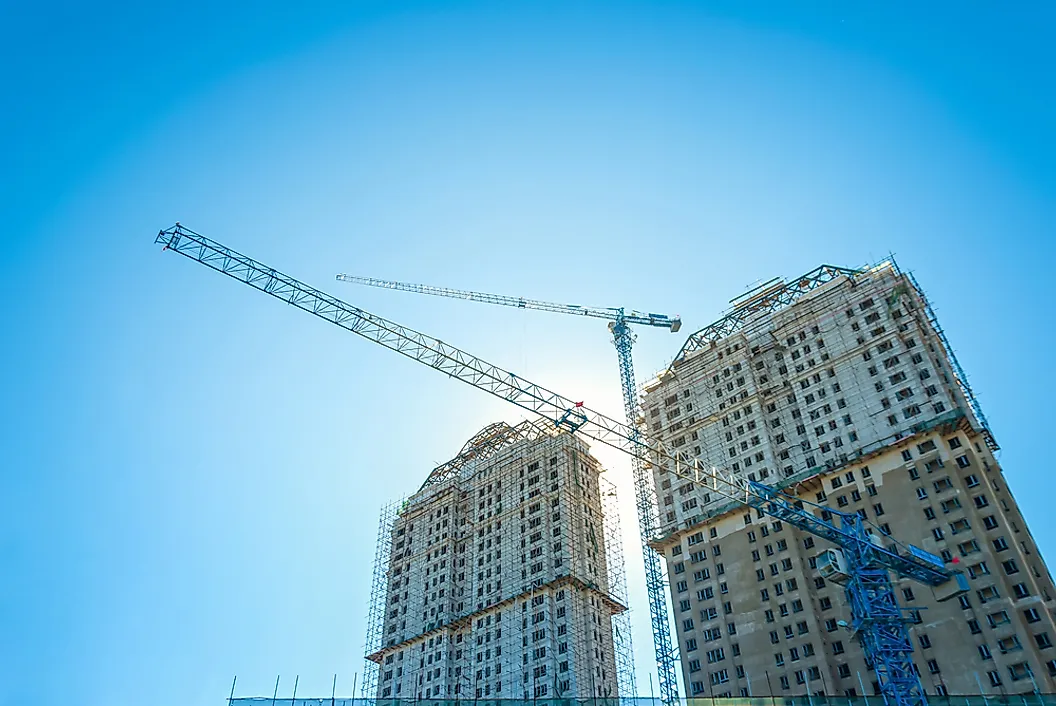In recent years, several nations around the world have experienced a remarkable construction boom, characterized by the rapid development of skyscrapers and iconic high-rise buildings. This trend not only reflects urban growth and economic prosperity but also showcases architectural innovation and engineering prowess on a global scale. In this blog, we delve into the countries leading this construction boom, highlighting their ambitious projects, economic drivers, and the impact of skyscrapers on their urban landscapes.
The Global Rise of Skyscrapers
Understanding the Skyscraper Phenomenon
Skyscrapers, defined as tall buildings exceeding 150 meters (492 feet) in height, have become symbols of modernity and urbanization. These towering structures serve various purposes, including commercial offices, residential spaces, hotels, and mixed-use complexes. The construction of skyscrapers requires advanced engineering techniques, innovative design concepts, and significant investment, making them focal points of architectural achievement and economic development.
Factors Driving the Construction Boom
Several factors contribute to the construction boom in skyscrapers across different nations:
- Urbanization and Population Growth: Rapid urbanization and population growth in urban centers create demand for high-density housing, commercial spaces, and infrastructure.
- Economic Growth: Strong economic performance and investment in real estate drive demand for prestigious office spaces, luxury residences, and commercial developments.
- Technological Advancements: Advances in construction technologies, materials, and engineering methodologies enable the construction of taller and more complex structures.
- Globalization and Competition: Cities compete globally to attract businesses, tourists, and residents, leading to ambitious architectural projects that enhance city skylines and bolster international prestige.
Countries Leading the Construction Boom
China: Pioneering Skyward Growth
China stands out as a global leader in skyscraper construction, with cities like Shanghai and Shenzhen at the forefront of this boom. The country’s rapid urbanization and economic expansion have fueled the development of iconic skyscrapers such as the Shanghai Tower, Shanghai World Financial Center, and the Ping An Finance Centre in Shenzhen. These structures not only symbolize China’s economic prowess but also showcase architectural innovation and sustainable design practices.
United Arab Emirates: Transforming Skylines
The United Arab Emirates (UAE), particularly Dubai and Abu Dhabi, has undergone a dramatic transformation with its skyline dominated by futuristic skyscrapers. The Burj Khalifa, the world’s tallest building, exemplifies Dubai’s ambition to become a global business and tourism hub. Other notable developments include the Marina 101, Cayan Tower, and the Abu Dhabi Investment Authority Tower, reflecting the UAE’s investment in luxury residences, commercial spaces, and hospitality infrastructure.
United States: Iconic Structures Across Cities
In the United States, cities like New York City, Chicago, and Miami continue to add to their iconic skylines with new skyscrapers. New York City’s One World Trade Center, Chicago’s Willis Tower (formerly Sears Tower), and Miami’s One Thousand Museum are just a few examples of landmark skyscrapers that define these urban landscapes. The construction boom in the U.S. is driven by demand for prime office spaces, luxury condominiums, and mixed-use developments in major metropolitan areas.
Saudi Arabia: Vision 2030 and Urban Development
Saudi Arabia’s Vision 2030 initiative aims to diversify the economy and reduce dependence on oil revenues. As part of this vision, cities like Riyadh and Jeddah are witnessing a surge in skyscraper construction. The Kingdom Tower in Jeddah, set to be the world’s tallest building upon completion, and the King Abdullah Financial District in Riyadh are flagship projects that highlight Saudi Arabia’s commitment to urban development and economic diversification.
Malaysia: Kuala Lumpur’s Skyline Evolution
Kuala Lumpur, Malaysia’s capital city, has transformed its skyline with impressive skyscrapers such as the Petronas Twin Towers, once the tallest buildings in the world. The city continues to develop with projects like the Exchange 106 and the PNB 118, reflecting Malaysia’s economic growth and aspirations to enhance its status as a global business hub in Southeast Asia.
Impact of Skyscrapers on Urban Landscapes
Economic Growth and Job Creation
The construction of skyscrapers stimulates economic growth by creating jobs in construction, engineering, architecture, and related industries. Skyscrapers also attract investment in real estate and infrastructure, driving economic activity and contributing to local and national GDP.
Urbanization and Infrastructure Development
Skyscrapers accommodate urban population growth by offering high-density living and working spaces. They contribute to urban revitalization and the development of mixed-use neighborhoods that integrate residential, commercial, and recreational facilities.
Architectural Innovation and Sustainability
Skyscrapers serve as platforms for architectural innovation, pushing the boundaries of design and engineering. Many modern skyscrapers incorporate sustainable features such as energy-efficient systems, green roofs, and LEED certifications, contributing to environmental conservation and urban sustainability.
Challenges and Considerations
Environmental Impact and Sustainability
The construction and operation of skyscrapers can have significant environmental impacts, including energy consumption, carbon emissions, and urban heat island effects. Balancing architectural ambition with sustainable practices is crucial for mitigating these impacts and promoting eco-friendly development.
Socioeconomic Inequality and Gentrification
Skyscrapers can exacerbate socioeconomic inequality by driving up property prices and displacing local communities. Cities must implement inclusive urban planning strategies that prioritize affordable housing, social equity, and community engagement.
Future Trends and Outlook
Vertical Cities and Megatall Structures
The future of skyscrapers may see the rise of “vertical cities” that integrate living, working, and recreational spaces within a single skyscraper complex. Megatall structures exceeding 600 meters (1,968 feet) in height, like the Jeddah Tower and the Dubai Creek Tower, exemplify the ongoing pursuit of architectural height and innovation.

